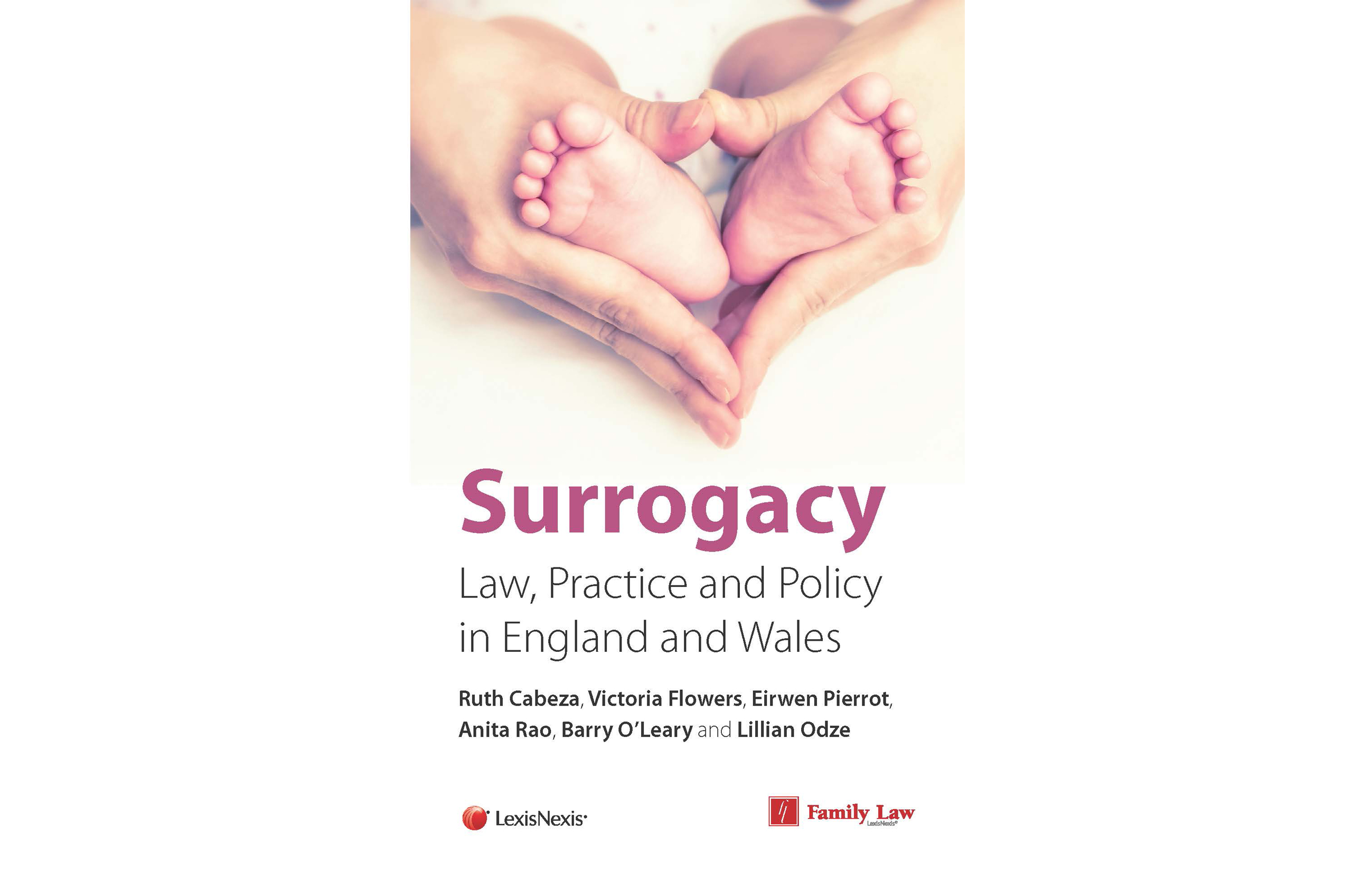Family Law, surrogacy, Surrogacy and Risks of Family Secrets, The Case for Surrogacy Law Reform, Parenthood in the Context of Assisted Reproductive Treatment, Parental Orders, When Surrogacy Agreements Break Down, International Surrogacy and British Nationality and Immigration Law
Ruth Cabeza, Victoria Flowers, Eirwen Pierrot, Anita Rao, Barry O’Leary and Lillian Odze, LexisNexis Family Law 2018, paperback. £99.99
Lawyers have an honourable and growing role in family creation. They can assist the couple in making an informed choice of partnership. Their vicarious experience of what needs to be addressed in pre-marital and cohabitation contracts – and in making the former influential and the latter binding – may help the parties to ensure that they are right for one another. Failing that, such arrangements may make extrication less disagreeable than otherwise.
Any midwifery metaphor is rather more apposite when it comes to procreation and parenthood. In (very) rough historical order we have adoption, (Adoption Act 1926), surrogacy (Surrogacy Arrangements Act 1985, shortly after Kim Cotton had carried a child for a Swedish couple she had never met), and human assisted reproduction (Human Fertilisation and Embryology Act 1990, 12 years after Louise Brown, conceived after her parents’ gametes met in a petri dish, was born in Oldham and District General Hospital). Naturally other assistants, medics, social workers and such, need to play their sometimes more important parts in safeguarding successful outcomes. For ‘things they do go wrong’ (
Three Steps to Heaven, B and E Cochrane) as we see in chapter 5 of
Surrogacy: Law, Practice and Policy in England and Wales. In assisted reproduction there are ‘….cases where much joy but also, sadly, much misery has been caused by the medical brilliance, unhappily allied with the administrative incompetence, of various fertility clinics’ (Sir James Munby P,
Re Human Fertilisation and Embryology Act 2008 (Cases A, B, C, D, E, F, G and H) [2015] EWHC 2602 (Fam), [2017] 1 FLR 366). And in both adoption and here, in surrogacy, the birth parents may change their minds.
Ruth Cabeza and her co-writers have the advantage, as Mrs Justice Theis, herself a specialist, points out in the Foreword, of having considerable practical expertise of their subject. The only flaw in the first seven pages which cover definition, the adoption alternative, and the altruistic, compensated and commercial varieties, is that one is left wanting more. There follow six chapters on current substance before we come to ‘Surrogacy and Risks of Family Secrets’ and ‘The Case for Surrogacy Law Reform’, both of which would be of interest to a much wider readership. More generally, one can learn a lot about this subject simply by following the chapters’ sub-headings.
Chapter 2 ‘Parenthood in the Context of Assisted Reproductive Treatment’ deals with the starting position. Who’s the mother? The father? What if the surrogate is married or civilly partnered? Death? Gender change? We move on to ‘Surrogacy Law’ and ‘Parental Orders’ where ‘the vital importance of ensuring that all involved…receive the best advice possible’ (p 35) is rightly stressed. As Sir James Munby P said (after the publication of this book) with regard to ‘the 38th case’ he has decided involving bureaucratic failings at fertility clinics, how ‘frightening it can be for an ordinary person… to be confronted with the news…some years after the birth of a much-loved child, that there is something wrong with the paperwork’ (
Re Human Fertilisation and Embryology Act 2008 (Case AL) [2018] EWHC 1300 (Fam)). Thus, the authors here are right to include ’infertility clinics’ in the list of those for whom their work is an ‘essential guide’ (blurb, see below). With regard to the current position for single people who are unable to obtain a parental order following a surrogate birth, there has been further movement since this book appeared, with a
Government estimate that a remedial order of declaration of incompatibility with the European Convention on Human Rights should be completed before the [parliamentary] summer recess in 2018.
Chapter 5,’When Surrogacy Agreements Break Down’ covers such as changes of mind by the birth mother, ie keeping the baby, not consenting to the parental order, and the alternative orders of adoption, child arrangement order or wardship. Then, ‘Employment Rights and Surrogacy’, reminds us that full legal implications of parenthood apply just as much here as in ‘conventional’ cases before the self-explanatory ‘International Surrogacy and British Nationality and Immigration Law’ chapter deals with children who are produced abroad in order to avoid the UK restrictions on commercial surrogacy.
‘Surrogacy and Risks of Family Secrets’ re-visits the theme that Mike Leigh’s 1996 film,
Secrets and Lies, addresses with regard to adoption. One hopes that readers will echo the book’s ambitions for the future, eg, the replication of the adoption panels’ role in preparing the intended parents to undertake life story work with the children. Finally, ’The Case for Surrogacy Law Reform’ memorably points out that ‘For far too long, Parliament has adopted the position of the three wise monkeys’ (p 183). The Law Commissions of England and Wales and the Scottish Law Commission’s May 2018 announcement that they have received
Government funding for a review of surrogacy laws will surely lead to considerable interest in this book
– which achieves what many do not in justifying its blurb, ie that it is an ‘essential guide for legal practitioners, academics, students, policy-makers, infertility clinics and charitable organisations’.












 24 APR 2024
24 APR 2024

 24 APR 2024
24 APR 2024

 22 APR 2024
22 APR 2024

 22 APR 2024
22 APR 2024

 18 APR 2024
18 APR 2024














Leave a commentOrder by
Newest on top Oldest on top